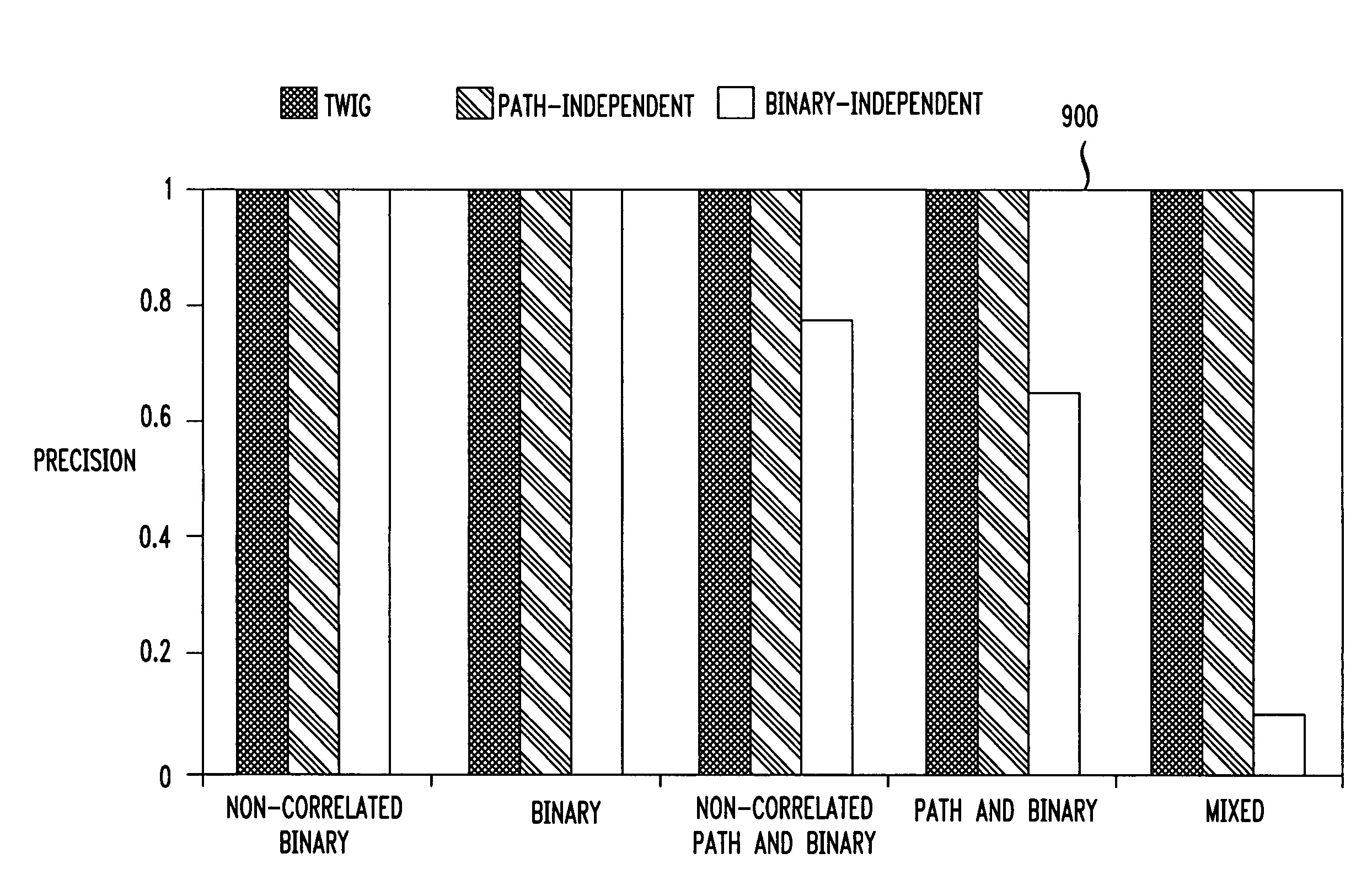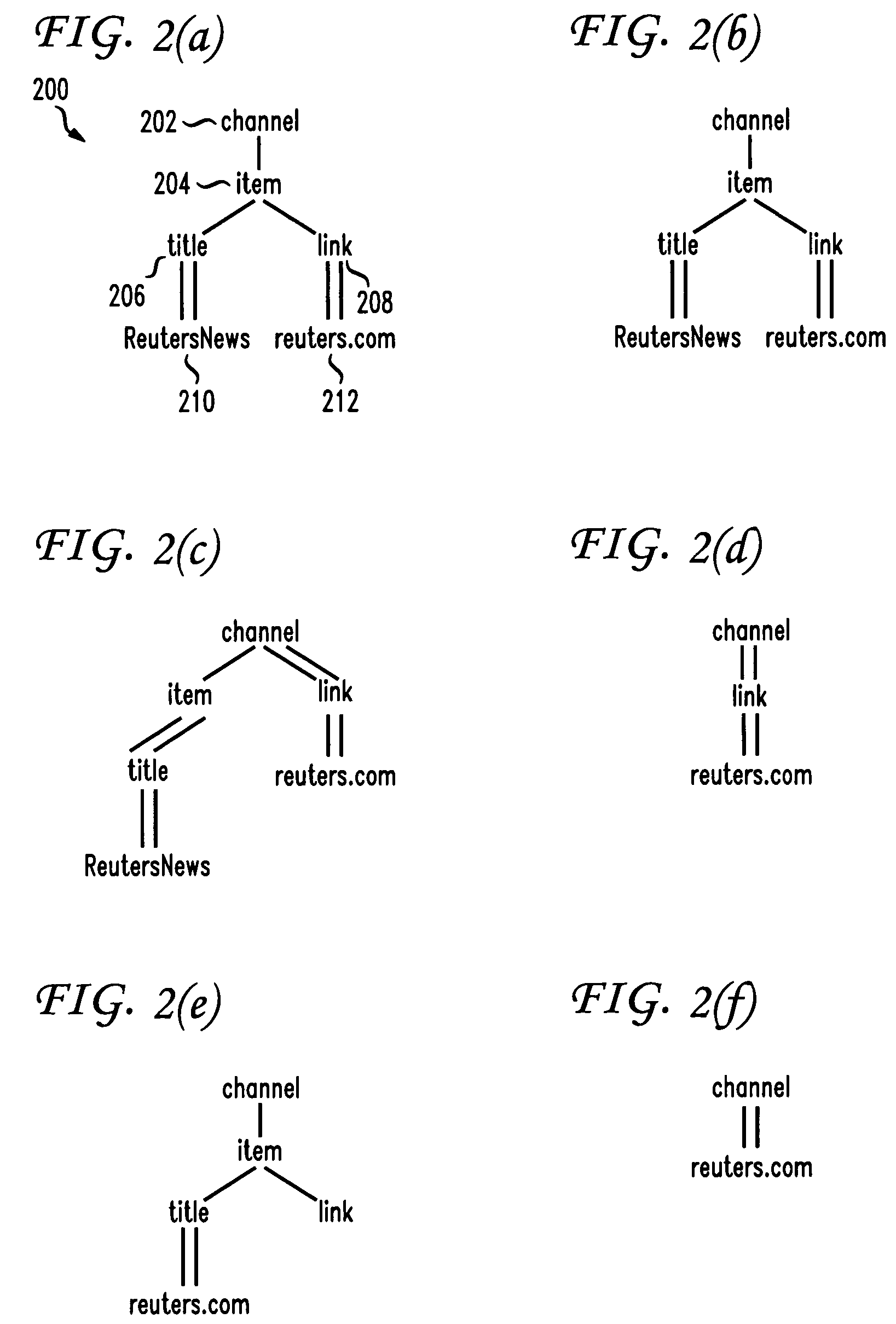System and method for providing structure and content scoring for XML
a scoring system and content technology, applied in the field of xml data, can solve the problems of time and space consumption of twig scoring, and achieve the effects of reducing processing time, efficient query evaluation and top-k processing, and quick determination of partial match scor
- Summary
- Abstract
- Description
- Claims
- Application Information
AI Technical Summary
Benefits of technology
Problems solved by technology
Method used
Image
Examples
example 12
The Sets of Queries
{channel / item / title, channel / item / link},
{channel / item, channel / / title, channel / / link}
are the Path and Binary Decompositions, respectively, of a twig query
“channel / item[.title] / link”.
[0075]For each decomposition, the inventors also need to define how the scores for the individual fragments are combined into a final answer score. The idf measure depends on whether joint (correlated) matches are considered only or assume independence between matches to the individual components of a twig query. Hence, there are two definitions of idf: one for the correlated case and one for the independent case.
[0076]Definition 13 (Path / Binary idf Score) Let Q be a twig query, Q′ a relaxation of Q, and D an XML document. The inventors define
[0077]IDFDQ(Q′)=Q⊥(D) / ⋂Qi∈decomp(Q′)Qi(D)
for correlated scoring, and
[0078]IDFDQ(Q′)=∑Qi∈decomp(Q′)Q⊥(D) / Qi(D)
for independent scoring.
[0079]The idf score of an answer under the above assumptions is again the maximal idf of a relaxation c...
PUM
 Login to View More
Login to View More Abstract
Description
Claims
Application Information
 Login to View More
Login to View More - R&D
- Intellectual Property
- Life Sciences
- Materials
- Tech Scout
- Unparalleled Data Quality
- Higher Quality Content
- 60% Fewer Hallucinations
Browse by: Latest US Patents, China's latest patents, Technical Efficacy Thesaurus, Application Domain, Technology Topic, Popular Technical Reports.
© 2025 PatSnap. All rights reserved.Legal|Privacy policy|Modern Slavery Act Transparency Statement|Sitemap|About US| Contact US: help@patsnap.com



